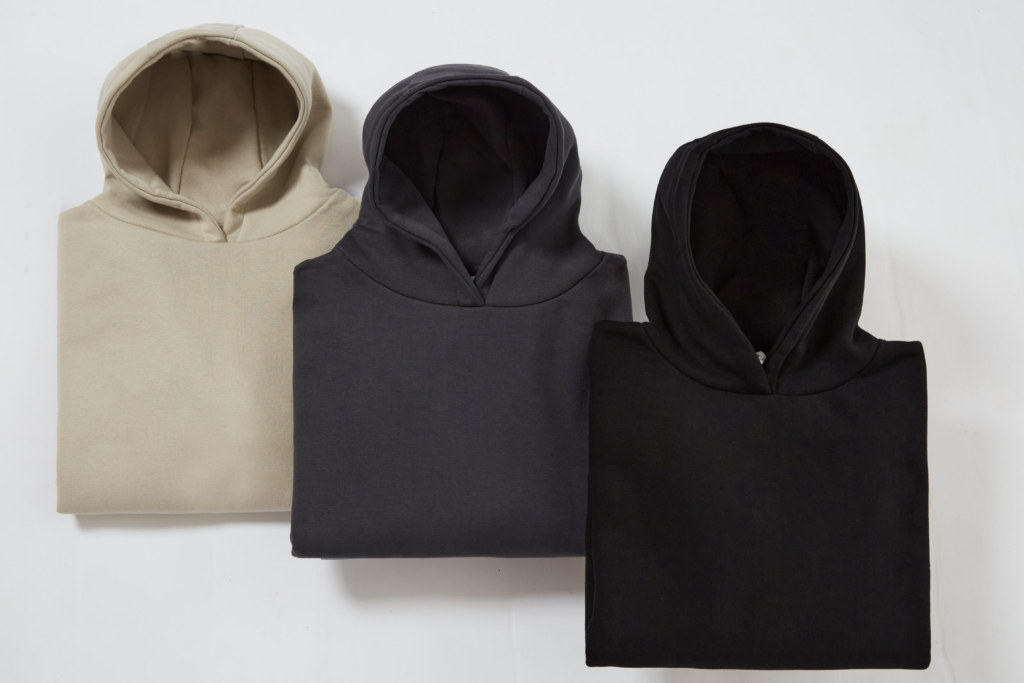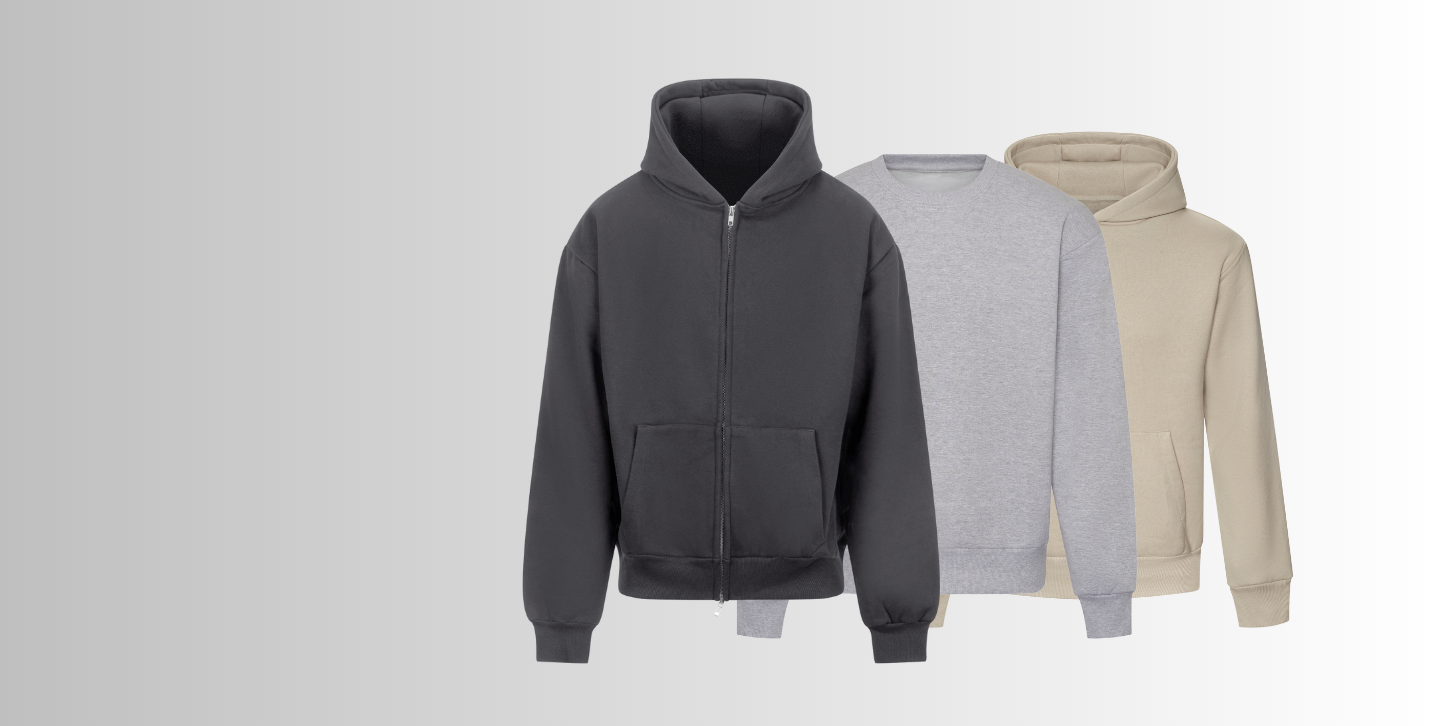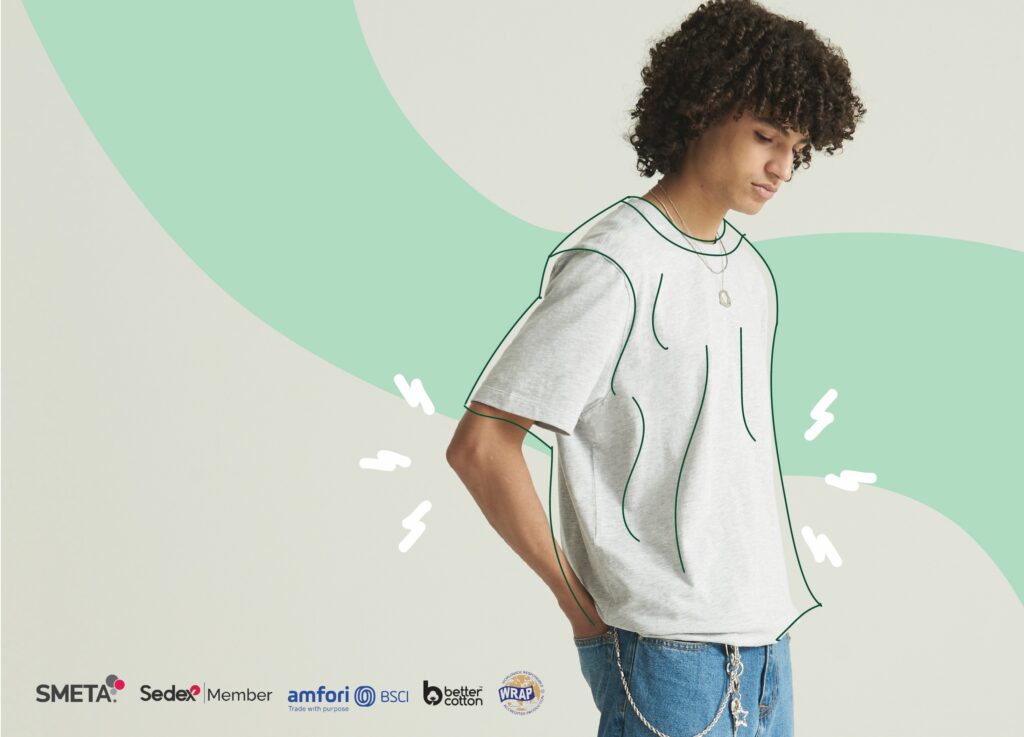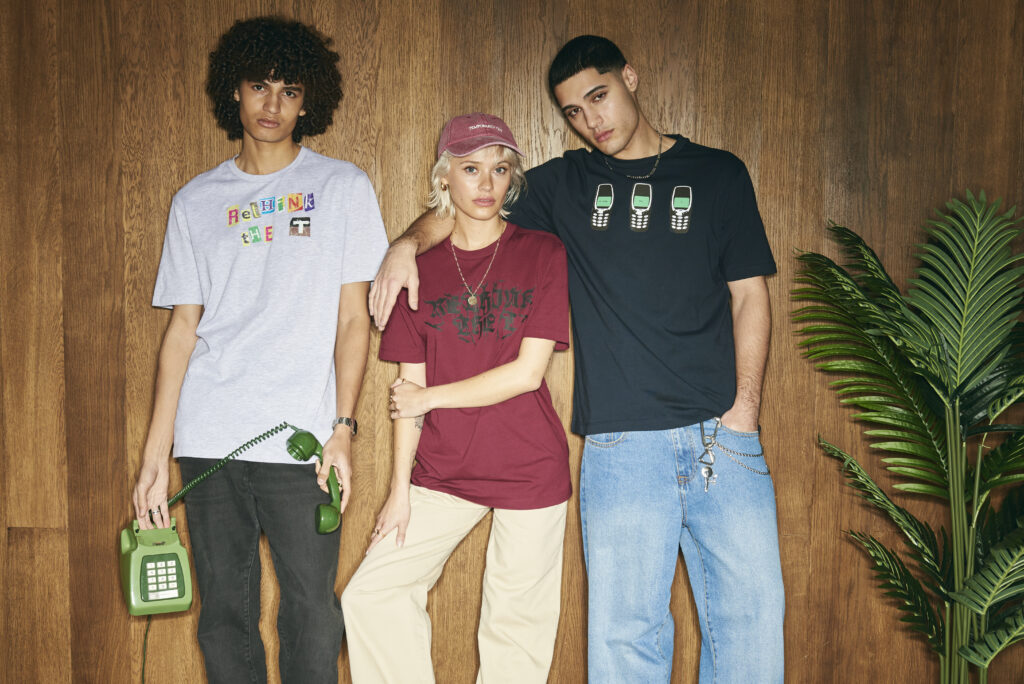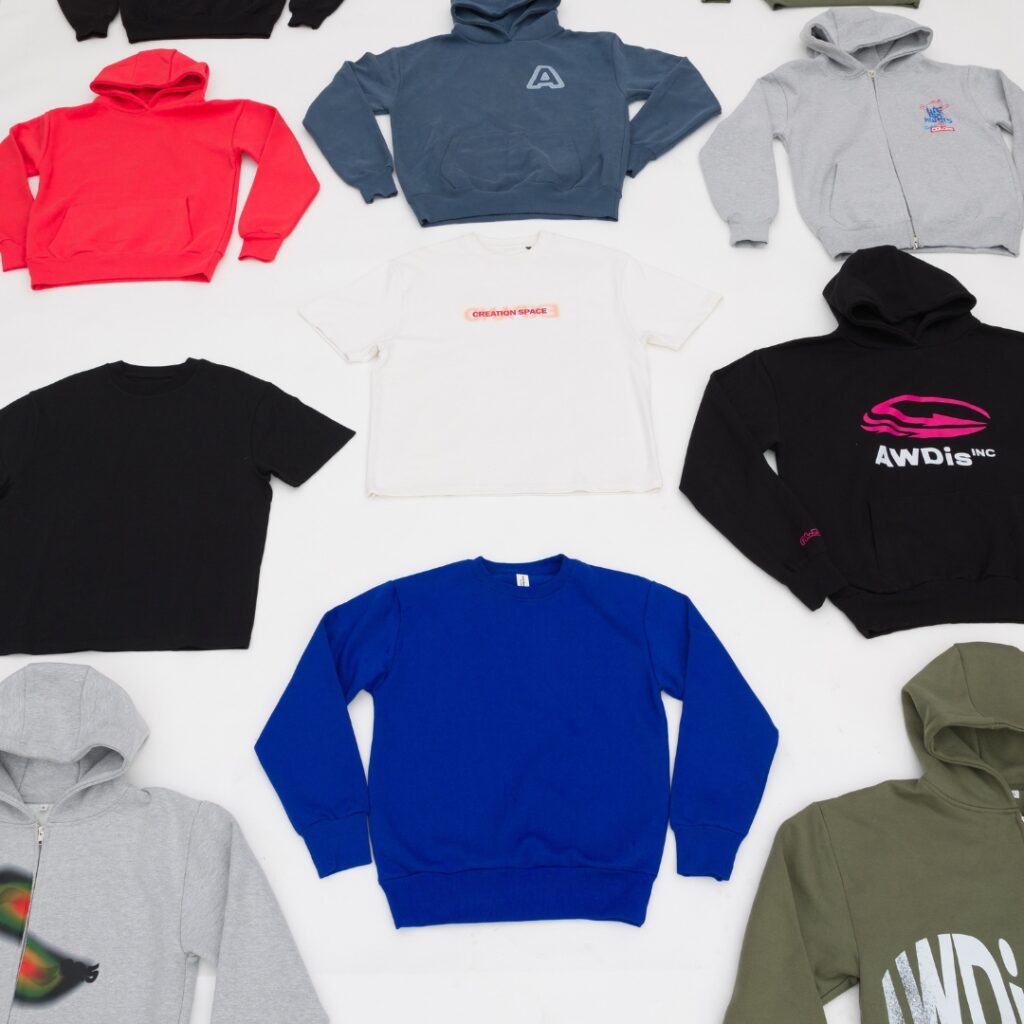When it comes to quality and durability, heavyweight fabric stands in a league of its own. Known for its structure, warmth and endless printing potential, it’s no surprise heavyweight fabric is an industry favourite for hoodies, sweats and tees.
In this blog, we’ll dive into our heavyweight collection and explore the benefits of these higher GSM garments. But first, what actually qualifies as ‘heavyweight’? And how does it differ to regular weight cotton?
How heavy is ‘heavyweight’?
Typically, in fabric terms, heavyweight refers to fabrics with a high GSM (grams per square metre), depending on the garment type. For example:
- T-shirt / Polos Lightweight fabrics – 100-150 GSM
- T-shirt / Polos Midweight fabrics – 160-190 GSM
- T-shirt / Polos Heavyweight fabrics – 200 GSM and above
- Hoods/Sweats Lightweight fabrics – 240-260 GSM
- Hoods/Sweats Midweight fabrics – 270-320 GSM
- Hoods/Sweats Heavyweight fabrics – 330 GSM and above
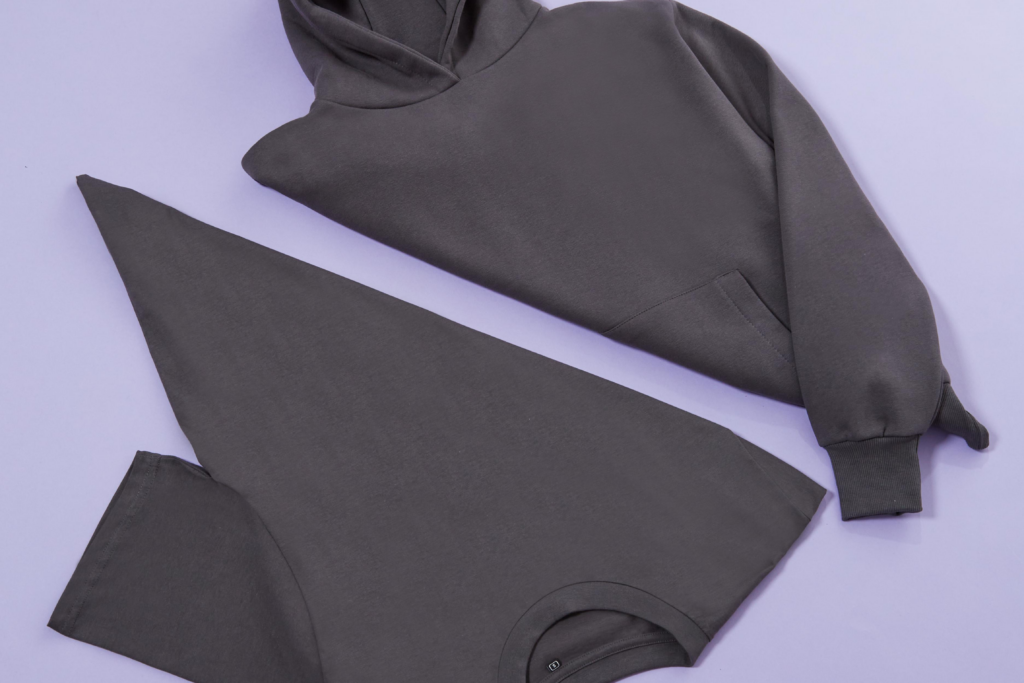
Heavyweight vs. lightweight cotton
Lightweight or midweight fabrics are often used for standard t-shirts and lighter hoodies/sweats, as they provide a softer, more breathable feel. Heavyweight cotton is thicker, denser and sturdier than lightweight or regular cotton, making it ideal for hoodies, sweatshirts and more structured tees, since the fabric is able to better hold its shape.
Why choose a heavyweight garment?
The are many reasons why choosing a heavyweight garment may be more beneficial to you, these include:
- Durability – crafted from heavier cotton, garments with a higher GSM are more robust and able to resist wear, tear and stretching over time, even after multiple washes.
- Comfort – the thick nature of heavyweight cotton makes it much warmer than regular cotton – meaning garments are cosier and great for layering in the cooler months.
- Style – For hoodies and tees, heavyweight fabric creates a structured, premium look and feel that is on trend and can take any outfit to the next level.
- Fit – the weight of heavier garments allows them to maintain their shape when wearing and washing, providing a more flattering fit that doesn’t cling to the body. Heavyweight garments tend to be slightly roomier for increased comfort, style and freedom of movement.
- On trend – heavyweight styles are more in demand now than ever, in both retail and the printing industry. Customers are seeking garments with a higher GSM for that premium feel.
Decoration
One of the main benefits of heavyweight fabric is the decorating potential. The durability of heavyweight fabric makes it ideal for large embroidery designs that regular fabric wouldn’t be able to handle.
The thicker fabric resists puckering and stretching, ensuring the design is of the highest possible professional quality. Heavier fabrics also better absorb inks and dyes, resulting in vivid and rich prints every time.
With print types such as DTG or screen print, heavyweight fabrics have a smoother surface because they are densely packed with threads and cotton fibres.
